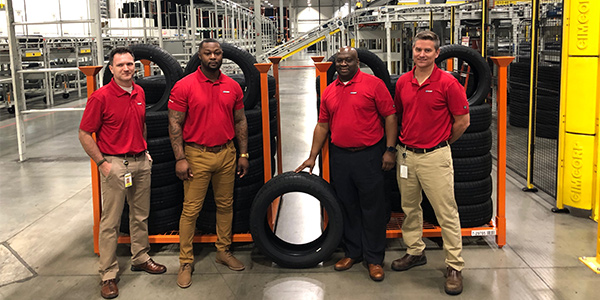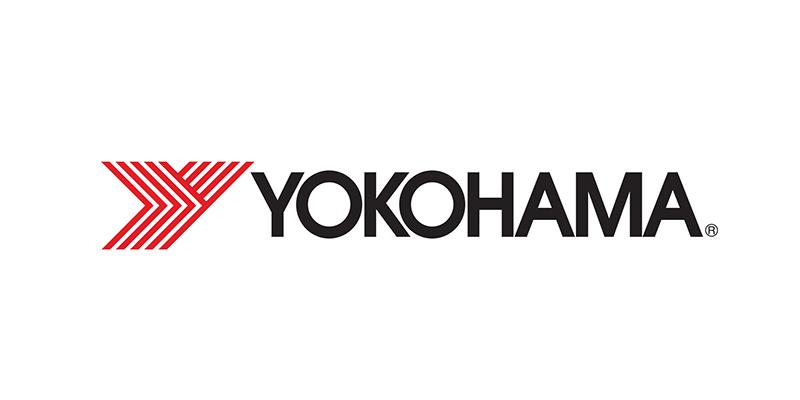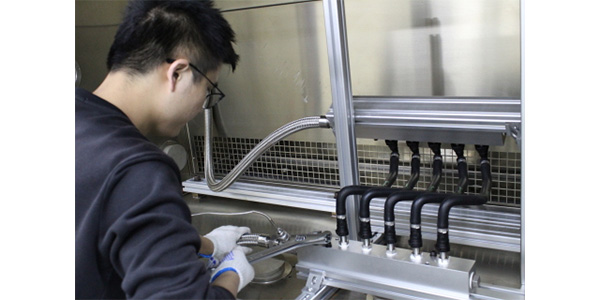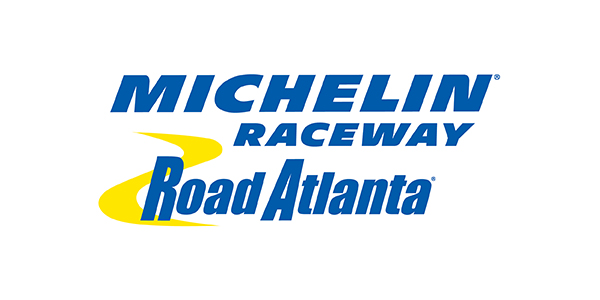This year marks the 10th anniversary of the U.S. EPA’s SmartWay program. This “unique collaboration” between freight shippers, fleets and logistics companies focuses on improving “fuel efficiency and reduced emissions from freight transport.”
To do so, though, it relies heavily on voluntary action by all parties, particularly those that produce truck components and accessories that directly con- tribute to a fleet’s fuel usage.
Like tires.
Tire producers have embraced SmartWay in a big way, and while it is a very public and broad-based green endeavor for the trucking industry, tiremaker and marketer participation has not necessarily or only been for environmental reasons. For truck tire producers, SmartWay verification is a marketing tool that separates the technologically advanced from the rest of the pack.
And because of the marketing advantage a SmartWay verification means – at least in the eyes of tire producers – some wonder if loopholes in SmartWay system can or are being exploited.
Are some tire producers cheating the voluntary system?
Fuel costs, of course, are a huge factor for any size fleet in any vocation, but perhaps more so for larger over-the-road fleets – regional and national routes – where a single percent im- provement in fuel efficiency can mean a $60,000 annual savings for a 100 truck fleet.
But tires themselves remain a major cost factor, an “investment” fleets make with the hopes of maximizing total tire lifecycle costs – both in terms of original removal mileage and further lifecycle gains from an effective retreading effort. That means fleets also want tires that last a long time.
The problem is that a fuel-efficient tire doesn’t necessarily deliver long tread life and vice versa. Tiremakers are getting better at balancing these divergent performance characteristics, but to reduce rolling resistance tiremakers reduce tread depth – shallower treads reduce fuel consumption – tweak tire construction and/or adjust tread rubber compounds.
Longer tread life, on the other hand, comes from deeper original skid depths, harder tread compounds and different construction architecture. For decades, truck tires have been focused on delivering max mileage and casing durability, and tiremakers are quite good at producing such with current technology. Making fuel-efficient tires is different technology that requires new investments.
Fleets want the best of both worlds, to be sure, and they may be “getting” that from some tiremakers that may be taking advantage of the EPA’s lack of SmartWay enforcement. The lack ofpost-verification checks leave plenty of room for a tire producer to create and test a fuel-efficient make/model/size tire, market their SmartWay certification, and then switch to a longer removal mileage version or even their standard radial.
Because measuring a tire’s real-world fuel performance is much more difficult than assessing cost/32nd of treadwear, the unsuspecting customer may think they are getting “better” fuel economy AND superior treadwear.
“Production tires are usually much different than prototypes or test product,” another expert offered. “Once you start production, other variables creep into the equation that are usually controlled in a lab setting.”
Value to Fleets
Truck fleets – particularly line haul fleets that spend millions on fuel each year – see fuel-efficient tires as a huge benefit. While getting to an absolute savings figure is quite difficult for a fleet given the vast number of uncontrollable variables (aerodynamics, weather, driving style, road conditions, changing tread depths, loads and load placement within trailers, vehicle and tire maintenance, inflation pressures, etc.), many fleets seem satisfied that fuel efficient tires deliver a major expense line savings.
Doing basic math illustrates the point. Assume that a fleet of 100 tractor/trailers travel 100,000 miles per year, averaging 6 mpg on standard, non-fuel efficient radials. Let’s say that a switch to fuel-efficient tires, conservatively speaking, nets a 2% improvement, bumping the fleet average to 6.2 mpg.
At 6 mpg, one tractor/trailer will consume 16,667 gallons annually when driving 100,000 miles on standard tires. At 6.2 mpg, the same rig with fuel-efficient tires will consume only 16,339 gallons of fuel – a savings of 328 gallons per year per tractor/trailer. For those 100 rigs, that’s a savings of 32,800 gallons of fuel. With diesel at $3.90 per gallon, the savings going directly to the fleet’s bottom line is $127,920.
Little wonder, then, that SmartWay verified truck tires and retreads are desired.
And while SmartWay remains a voluntary program, in California it is the law. As of Jan. 1, trucks running in that state – regardless of where they originate or are domiciled – that run on drive tires with two or more open shoulders must use SmartWay verified tires. Also on that date, retreads used by California-based fleets must include SmartWay-verified tread stock.
That change is simply an extension of existing CARB regs enacted in 2010 that required all tractor/trailers operating in the state from model year 2011 on to use SmartWay-verified tires. Violators face heavy fines.
But there are no fines for fleets outside of California that choose to not use SmartWay tires. The original plan for SmartWay included EPA run field-testing of verified tires to keep everyone honest, but budget problems prevented that from happening. While that plan is still on the books, continuing pressure on government budgets seems likely to stall implementation of any such field-testing for the foreseeable future.
And that factor alone appears to be the prime contributor to new claims that some tiremakers may be pulling the above-described switcheroo.
Easy to Point Fingers
The possibility of such a cheat was raised with Tire Review in mid-2013, but no specific tire producer or marketer was named. In fact, even today after digging into the story, only vague suggestions have been offered as to how it could happen and what companies might perhaps be involved.
It would be easy – far too simple, in fact – to point the finger at “Chinese tires,” a polite catch-all euphemism for “low tech, cheap tires,” early in SmartWay’s life, some major names gamed the existing test system to gain additional verifications. Once the test system was adjusted, they were forced to “de-verify” certain models and sizes, change their construction/compounds and retest.
Additionally, it is easy to dismiss the seriousness of the situation “because they’re just minor brands;” those low Tier 2-Tier 4 brands make up some 33% of the U.S. replacement market right now, an industry insider claimed.
Keep in mind that even if allegations that some might be scamming the system, there is nothing illegal in doing so. There is, after all, no post testing verification effort, roadside checks and other than CARB, no actual law attached to SmartWay. It is – and remains – completely voluntary.
Still, tiremakers have a better sense as to what is really happening. It is no secret that they buy and test each other’s products all of the time, and SmartWay verification testing is probably the most popular. One tire company executive told Tire Review plainly that, “We have independently tested an unnamed competitor’s tires and found that none of the tires even came close to the SmartWay thresholds for verification. These tires were randomly purchased in the field over a one-year period after the manufacturer had achieved SmartWay verification.”
If there is one, perhaps there are more. And while breaking the spirit of the SmartWay program is no crime, the EPA states other significant crimes are involved.
For this story Tire Review reached out to some major tiremakers, mid-tier producers, importers, a variety of industry experts, both TIA and RMA, TRIB and RTA, and, of course, the U.S. EPA itself. While we promised anonymity to those responding, it was interesting that none of the Big Three provided responses to our questions.
Interesting, too, was that neither industry association participated. A couple of tire firms promised to respond, but we never received their comments. The EPA, though, did respond.
Enforcement Miss
Is the lack of post-sale checks a major loophole ripe for exploitation? Are some tiremakers cheating the system, thinking that their fleet customers really want long original treadlife over fuel efficiency? Are some fleets unaware that their “SmartWay verified” tires may have been tweaked?
“Other than the (EPA proposed) auditing procedure, little will occur to prevent this,” one maker told us. “But, a top tier consumer will not accept the rolling resistance savings at face value, and a compound switch would eventually be caught by the market. We stand by our test results and the accuracy of what we send to SmartWay for verification versus what is actually found in the market. We are also quite confident that the other premium manufacturers would not downgrade their compounding or rolling resistance after verification.”
“Reducing the rolling resistance of a radial truck tire involves several engineering aspects of which compounding is one,” another maker said. “Steel construction, inflated tire shape, molded dimensions, etc. all play a role in reducing the rolling forces.”
But that same maker cautioned that, “As with anything else, if a manufacturer chooses to participate in fraudulent practices, it could happen. Sizing, construction, DOT compliance, etc., can all be circumvented if the manufacturer chooses to do so.”
Another loophole may well be the lack of a SmartWay mark molded into the sidewall of tires. Even though tiremakers do a great job marketing their verifications, the EPA said it has never called for such a permanent mark on the tire. “Some tire manufacturers are marking their tires as fuel-efficient, but there is no marking symbol for SmartWay on the sidewall of tires,” one company said.
And lets not forget the impact of an inflation check program. Properly aired standard tires can deliver noticeably better fuel economy versus tires that receive inconsistent review and inflation. A fleet that is aggressive about tire checks and inflation maintenance may mask the expected rolling resistance deficiencies of non-SmartWay tires.
In its January 2014 issue, Canada’s Truck News discussed tire-related fuel economy issues. “Air pressure is still the most critical component to maintenance of a tire,” a marketing manager at Bridgestone Americas told the magazine. “It’s not just keeping it from overheating or blowing out. Air pressure that’s properly maintained increases the life of the casing, so you can retread it. So, you’re preserving your asset and preserving the value of the casing that you paid for when you bought the new tire.”
“It’s not easy to hit the SmartWay target, but sometimes it’s such that you sacrifice all other performance attributes,” a Goodyear marketing chief noted of some tiremakers.
“One of the problems is that fuel efficiency is very difficult to measure. There are so many factors involved,” the Bridgestone representative said, but he noted that SmartWay, as a whole, has been a good thing for the trucking industry.
If fuel economy is important – and it usually is – it’s okay to seek out a SmartWay tire, but also ensure the tire’s performance in other areas will be up to expectations, advised a marketing manager for Michelin. “Sometimes, you need to sacrifice on mileage to have a SmartWay tire, so you have to be careful about that. They may have a great tire on fuel, but if it only lasts 100,000 miles instead of 500,000 miles, it may not be worth it to you.”
Broken Laws?
“This is the tire business and anything is possible,” another tiremaker offered. “If and when they (a SmartWay cheater) would be caught, it would take years to overcome the stigma that would be labeled upon them. My personal opinion is their market share into the fleets that really care about fuel economy is relatively minor as of today. This, however, could change unless a few are caught and punished.”
The EPA, for its part, doesn’t seem overly concerned. An EPA spokesperson said it was not “uncommon for tire manufacturers to make minor adjustments to their tire ‘recipes’ to account for variation in the sourcing” of raw materials. Such “adjustments are intended to maintain consistent tire performance,” a much different situation than a tiremaker “intentionally deceiving tire buyers and the federal government” by selling a tire as SmartWay verified when it is not.
“Unfortunately, fraudulent practices are always possible, but multiple safeguards exist to both prevent and punish deceptive business behavior,” the spokesperson said.
Punishment could come two ways, the EPA said: lost business and heavy fines and/or jail time.
“If a tire model were to significantly underperform relative to its stated performance, demand for that product would dry up,” the spokesperson said. “If a company were to be exposed for making blatant fraudulent product claims, this would tarnish the company’s entire product line and reputation.”
The EPA, though, is relying on “market realities” and competitor testing to smoke out cheats, making it “unlikely that such fraud could go unnoticed for long.”
And the EPA reminds that under the U.S. False Claims Act, companies can be subject to damages and penalties for knowingly submitting a false claim to the federal government, such as “submitting for verification for one tire to EPA, then selling a different tire under that same verification.”
The government isn’t the only recourse, the EPA said. Individuals can file suit for violations of the False Claims Act, and report deceptive business practices to the Federal Trade Commission.
Cost Pressure Impact
From a competitive standpoint, fleets constantly press to reduce operating expenses. They may be okay paying a premium for “fuel efficient” tires – provided those tires deliver a marked decrease in fuel costs and a net overall expense reduction.
The balance between rolling resistance and removal mileage is a tenuous one – and as we have reported, one that can be exploited under the current system.
Do tiremakers need to pressure the EPA for a workable enforcement scheme? They are the ones, after all, that have invested heavily to produce outstanding radial truck tires. If a few bad apples start showing up, their investment suffers.
What can interested fleets do to press for greater enforcement? The trucking industry is a big stick in Washington, but can Washington find the dollars necessary to build out the rest of its own fuel savings and greenhouse gas emissions reduction program?
Or does the market provide its own muscle to enforce the program? Can violators be “outed” and sufficiently punished economically for cheating the system?
It’s a complicated issue, one with no easy answers. But we will continue to monitor the situation.
This article appeared in the March 2014 edition of Tire Review. You can read the entire issue on your phone or tablet by downloading the Tire Review app.











